Top 20 Yoga Asanas & Exercises for Kidney Patients
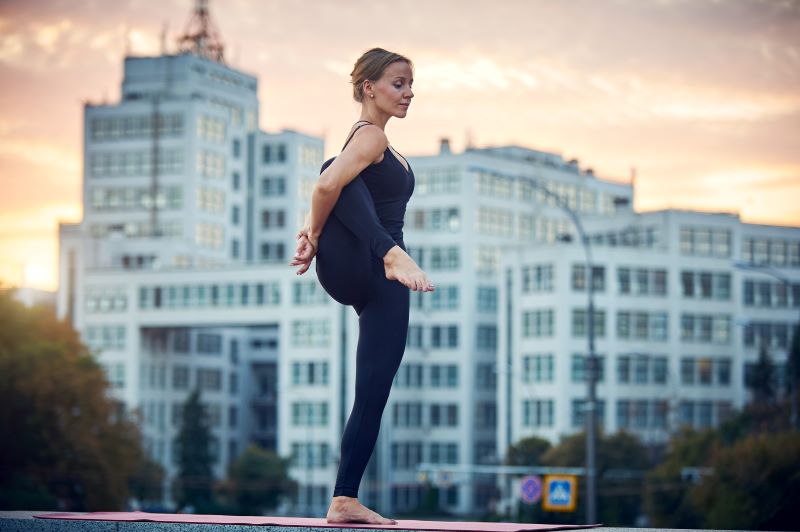
The kidneys are vital organs that play a crucial role in maintaining overall health by filtering waste products and excess fluids from the blood, regulating electrolyte levels, and supporting blood pressure control.
Among the various approaches to support kidney function, yoga asanas and exercises have emerged as effective and holistic methods. These practices enhance physical well-being, reduce stress, and improve mental health, critical for maintaining healthy kidneys.

Table of Contents

-
-
Salamba Bhujangasana (Sphinx Pose)
-
Ardha Matsyendrasana (Spinal Twist)
-
Bhujangasana (Cobra Pose)
-
Paschimottanasana (Seated Forward Bend)
-
Setu Bandhasana (Forward Pose)
-
Naukasana (Bridge Pose)
-
Mandukasana (Boat Pose)
-
Shashankasana (Frog Pose)
-
Pawanmuktasana (Wind-Relieving Pose)
-
Uttanpadasana (Raised Leg)
-
Ardha Bhekasana (Half Frog Pose)
-
Balasana (Child Pose)
-
Kapalbhati Pranayam (Skull Shining Breath)
-
-
-
Top Yoga Asanas to Improve Kidney Health
1. Salamba Bhujangasana (Sphinx Pose)
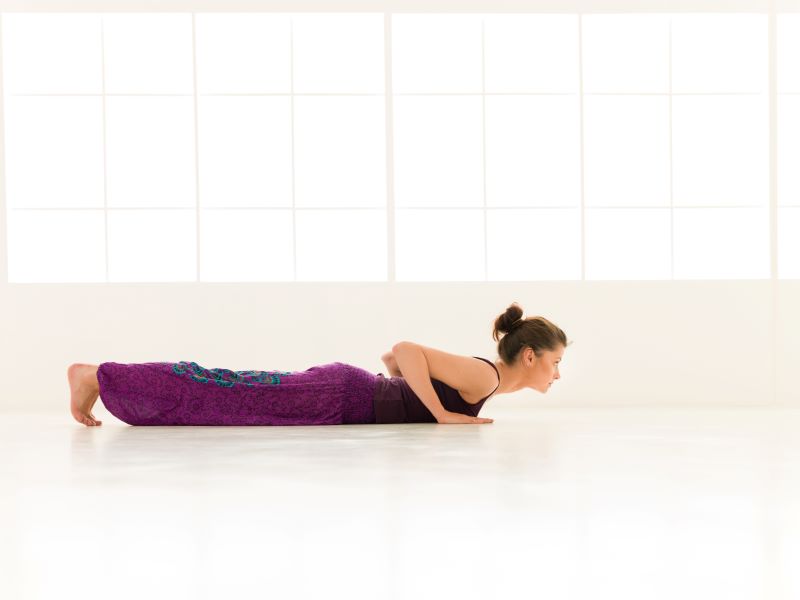
It can be an effective asana when considering yoga to treat kidney disease. This asana strengthens your spine and stimulates the organs in the abdominal region.
Yoga Level: Beginner
How to Do Salamba Bhujangasana(Sphinx Pose)?
Step 1: With your forehead lying on the ground and your toes flat on the floor, lie on your stomach.
Step 2: Maintain a close-knit posture with your feet and heels barely touching.
Step 3: Extend your hands before you, with your arms on the ground and your palms facing downward.
Step 4: Breathe deeply, then raise your head, chest and abdomen gradually, maintaining your navel on the ground.
Step 5: Pull your torso back and off the ground using your arms for support.
Step 6: Breathe mindfully as you bend your back vertebra.
Step 7: Make sure your head is straight ahead and your feet are still together.
Step 8: Exhale and slowly lower your head, chest, and abdomen back to the ground.
What are the Safety Precautions to Take While Performing Salamba Bhujangasana?
- Ensure your elbows are directly under your shoulders and your forearms are parallel. Engage your abdominal muscles to support your lower back and press the tops of your feet and thighs into the mat to distribute the lift evenly along your spine.
- Lift your chest using your back muscles rather than pushing excessively with your arms. If you feel strain, move your elbows slightly forward to keep your lower back comfortable.
- Maintain steady, deep breaths to support muscle relaxation and spinal support. Avoid holding your breath or tensing your neck and shoulders.
Who Should Avoid Practising Salamba Bhujangasana (Sphinx Pose)?
- People who have recently had abdominal surgery.
- People with ulcers or hernias.
- People with neck problems, such as spondylitis.
2. Ardha Matsyendrasana (Spinal Twist)
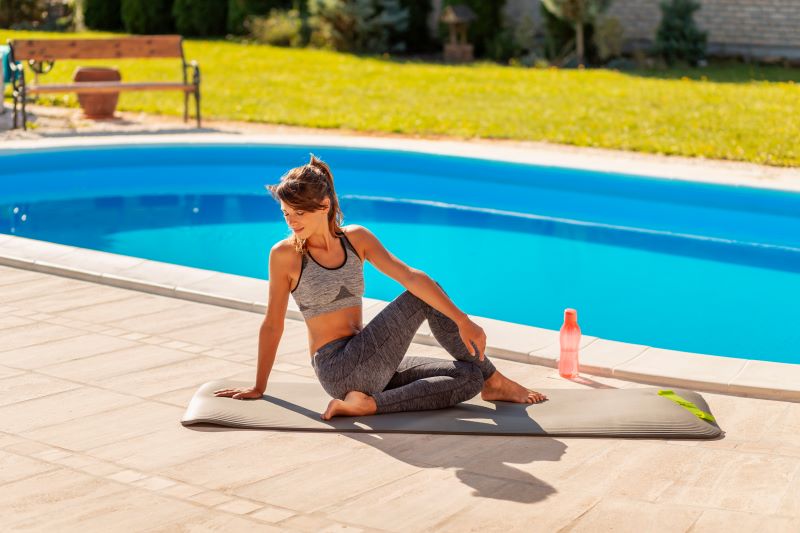
Another essential yoga asana for treating kidney problems is savasana, which helps increase the spine's elasticity, stimulate the kidneys, and improve immunity. For this asana, it would help if you sat up with stretched legs, keeping your feet together and spine erect.
Yoga Level: Intermediate
How to Do Ardha Matsyendrasana (Spinal Twist)?
Step 1: Take a seat on the ground. Extend your limbs in front of yourself.
Step 2: Your right leg should be bent at the knee. Place your right foot against the inside of your left thigh, near your anus.
Step 3: Lift your left knee and bend it. Exactly to the right of your right knee, plant your left foot flat on the ground.
Step 4: Extend your right hand backwards with your palm flat on the ground behind your back.
Step 5: Spread your left arm across your torso. Gripping your right ankle, extend it around your right knee.
Step 6: For thirty seconds, keep the position while breathing steadily.
Step 7: On the opposite side, repeat the same stance.
What are the Safety Precautions to Take While Performing Ardha Matsyendrasana?
- Keep your spine long and upright, initiating the twist gently from the base of your spine to avoid strain.
- Twist only as far as your flexibility allows without forcing the movement. Over-twisting can lead to spinal or muscular injuries.
- If your knee doesn't comfortably rest on the ground, use a yoga block or blanket under the knee to prevent overstretching and ensure proper alignment.
Who Should Avoid Practising Matsyendrasana(Spinal Twist)?
- Because of the intense twist in the abdomen, it should be avoided during pregnancy and menstruation.
- No one with head, heart, or abdomen surgery should do this pose.
- Those who have a hernia or peptic ulcer need to be careful.
- People with modest slipped discs can benefit from treatment, but in extreme cases, it should be avoided by individuals with significant spinal difficulties.
3. Bhujangasana (Cobra Pose)
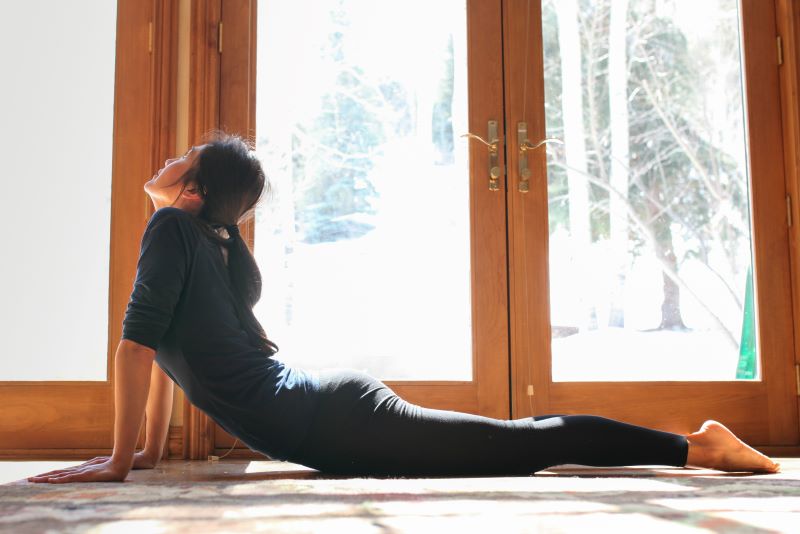
Most kidney patients can adhere to this yoga mudra to treat kidney problems. This yoga asana can be beneficial for stimulating abdominal organs and relieving stress and fatigue.
Yoga Level: Beginner
How to Do Bhujangasana (Cobra Pose)?
Step 1: Lie flat on your stomach in a relaxed position. Cross your arms in front of you and rest your head on them. Slowly bring your legs together and place your forehead on the floor.
Step 2: Bend your elbows and place your palms near your shoulders. Lift your elbows slightly off the floor. Inhale and lift your head, pushing your chin forward.
Step 3: Raise your upper body, pressing your abdomen to the floor. Imagine a snake raising its hood and feel the stretch in your spine. Hold the position.
Step 4: Slowly lower your body to the floor, keeping your head up until your torso is completely flat again.
What are the Safety Precautions to Take While Performing Bhujangasana?
- Engage your core muscles to support your lower back and lift your chest gently using your back muscles rather than pushing up forcefully with your hands.
- Ensure your elbows are not locked; keep them slightly bent to avoid straining your elbows and shoulders.
- Keep your neck aligned with your spine, avoiding excessively tilting your head. Look slightly forward or down to prevent neck strain.
Who Should Avoid Practising Bhujangasana (Cobra Pose)?
- People with carpal tunnel syndrome should avoid putting too much weight on their hands
- People with wrist injuries should avoid the pose
- People with neck injuries or limitations should avoid or modify the pose
4. Paschimottanasana (Seated Forward Bend)
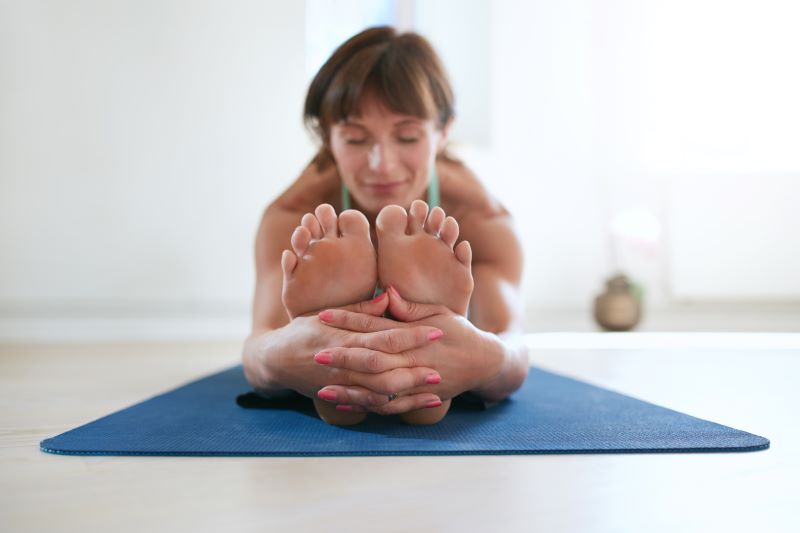
If you are looking for an effective yoga asana to improve kidney health, this asana can be ideal for you. Sitting up with stretched-out legs and an erect spine would be best. This asana can be effective for stimulating kidneys and improving digestion.
Yoga Level: Beginner to Advanced
How to Do Paschimottanasana (Seated Forward Bend)?
Step 1: Sit straight with your legs stretched out before you. Inhale and lift your arms over your head.
Step 2: As you exhale, bend forward at the waist, reaching your arms out to grasp your toes. Continue to bend forward, bringing your chest closer to your thighs, and try to rest your forehead on your legs.
Step 3: Hold this position for 30 seconds to one minute, breathing evenly.
Step 4: Inhale as you lift your torso and arms back over your head. Relax your arms and lower them back down.
What are the Safety Precautions to Take While Performing Paschimottanasana?
- Ensure your body is warmed up before attempting Paschimottanasana to prevent muscle strain. Perform gentle stretches or light aerobic activity.
- Activate your core muscles to support your lower back and protect it from overstretching during the forward bend. This helps in maintaining stability and prevents excessive strain on the spine.
- Bend forward from your hips with a straight back rather than rounding your spine excessively. Focus on lengthening your spine and reaching forward gradually without forcing yourself into a deeper stretch. This helps prevent strain on the hamstrings and lower back.
Who Should Avoid Practising Paschimottanasana (Seated Forward Bend)?
- People with injuries to the spine, hips, knees, ankles, shoulders, elbows, fingers, rib cage, neck, feet, or toes.
- People who have undergone recent hip or abdominal surgery.
- People recovering from wear and tear in the hamstrings, calves, ankles, or shoulders.
5. Setu Bandhasana (Bridge Pose)
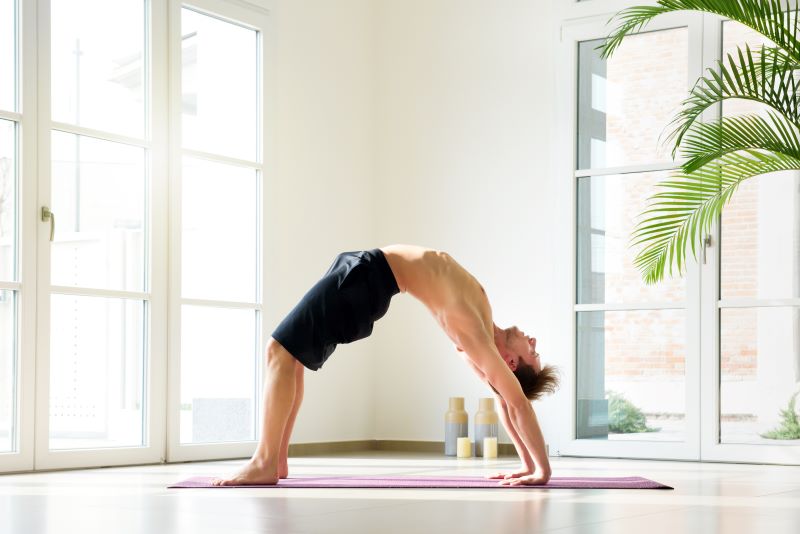
Another beneficial yoga asana that can improve kidney health is Setu Bandhasana. This asana helps to control high blood pressure and relieve stress.
Yoga Level: Beginner to Intermediate
How to Do Setu Bandhasana (Bridge Pose)?
Step 1: Lie down on your back on a firm surface with your knees bent and feet hip-width apart. Put your hands flat beside you, touching your heels lightly with your fingertips.
Step 2: Take a deep breath, then slowly lift your lower, middle, and upper back off the floor. Roll your shoulders inward and bring your chin towards your chest without tucking it down.
Step 3: Squeeze your buttocks and ensure your thighs are parallel to the floor and each other. Hold this position for one to two minutes.
Step 4: Exhale and slowly lower your back to the floor to release the pose.
What are the Safety Precautions to Take While Performing Setu Bandhasana?
- Support your neck by avoiding rolling onto the crown of your head. Instead, keep the back of your head and shoulders on the ground to protect your cervical spine.
- Activate your glutes (buttocks muscles) to stabilise your pelvis and prevent excessive lower back arching, which can lead to discomfort or injury.
- Keep your knees aligned over your ankles and avoid letting them splay outward or inward to maintain stability in the pose.
Who Should Avoid Practising Setu Bandhasana (Bridge Pose)?
- This pose involves changes to normal breathing patterns, so people with high blood pressure might have breathing issues.
- If someone does the bridge posture incorrectly, they risk aggravating their neck issues even more.
6. Naukasana (Boat Pose)
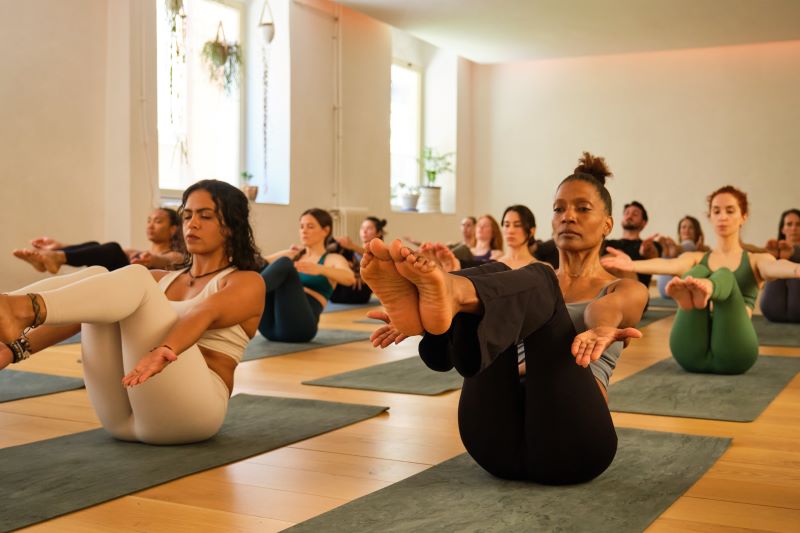
One of the standard yoga asanas for patients with kidney problems, Naukasana can be beneficial for strengthening your abdominal organs and improving your overall digestive system.
Yoga Level: Intermediate
How to Do Naukasana (Boat Pose)?
Step 1: Exhale and slowly lift your legs off the floor while breathing in. Keep your legs straight as you move them to a 45-degree angle. Lift your chest, shoulders, and back off the floor, balancing on your buttocks.
Step 2: Straighten your legs gradually and try to lift your toes toward your eyes, making the full boat pose. If it's hard, you can bend your knees and keep your shins parallel to the ground, creating a half-boat pose.
Step 3: Pull your shoulders back and reach your hands towards your toes. If it's difficult, hold onto your ankles or knees to complete the pose. Keep your spine long and your lower stomach engaged.
Step 4: Initially, hold the pose for 10-20 seconds, then gradually increase to one minute, breathing normally. Repeat this three times.
Step 5: To return to the starting position, exhale and release your toes. Slowly lower your lower body to the ground, then your legs, returning to the supine pose.
What are the Safety Precautions to Take While Performing Naukasana?
- Activate your core muscles, particularly the abdominal muscles, to support your lower back during the pose. This helps stabilise the spine and prevents excessive arching, reducing the risk of strain.
- Keep your spine long and straight throughout the pose to avoid overarching or rounding of the back, which can strain the spine.
- Avoid forcing your body into the pose beyond its limits. Listen to your body and go as far as possible while maintaining proper form without feeling pain.
Who Should Avoid Practising Naukasana (Boat Pose)?
- It is not advised for anyone with asthma, heart conditions, or high or low blood pressure to use Naukasana because it could result in serious side effects.
- Pregnant women should not do boat posture as it can lead to dangerous positions that could injure them.
- Women should avoid boat posture during the first two days of menstruation as it may result in cramps.
7. Mandukasana (Frog Pose)
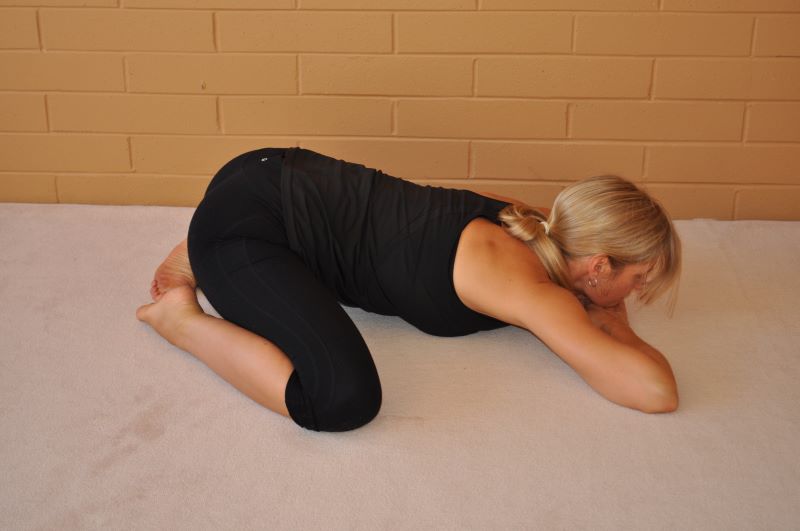
Another well-known yoga pose for patients with kidney problems, Mandukasana, is known for opening the circle of creativity in the mind. It would be best to lie on your knees and elbows on the floor. This asana stresses the abdomen region and energises the kidneys and liver, enhancing their performance.
Yoga Level: Intermediate to Advanced
How to Do Mandukasana (Frog Pose)?
Step 1: Sit on your hands and knees, like a tabletop, with your hands under your shoulders and knees under your hips. Hold this position for a moment.
Step 2: Slowly move your knees out to the sides while keeping your ankles and feet in line with your knees. Breathe steadily and feel the stretch in your thighs and hips.
Step 3: Turn your feet out and stretch your ankles until the inner parts of your feet, ankles, and knees touch the floor. If you're new to this, use a blanket under your knees to make it easier.
Step 4: Lower your forearms and elbows to the floor, keeping your palms flat, to get into the frog pose. Hold this for about five to ten breaths.
Step 5: Exhale and extend your arms forward while lowering your abdomen, chest, and chin to the floor, keeping your hips stable. Hold for a couple of breaths.
Step 6: Gently lift your body, pushing onto your hands to release the pose. Keep your knees together, come up, and sit back on your heels.
What are the Safety Precautions to Take While Performing Mandukasana?
- Begin with a proper warm-up to prepare your body, especially focusing on stretching the hips, thighs, and lower back. This helps to increase flexibility and prevent injury during the pose.
- Enter and exit the pose slowly and with awareness, paying attention to your body's sensations. Avoid jerky movements that can strain the muscles or joints.
- Avoid forcing yourself into the pose beyond your comfort level.
Who Should Avoid Practising Mandukasana (Frog Pose)?
- No one should do this posture with knee pain, as the pain may worsen as you stretch your knees. Because this pose puts pressure on the abdominal muscles,
- Pregnant women should exercise caution when performing it. Therefore, it is best to practise under a trainer's guidance.
- If you suffer from high blood pressure or heart issues, stay out of frog stance until your doctor gives you the all-clear.
8. Shashankasana (Hare Pose)
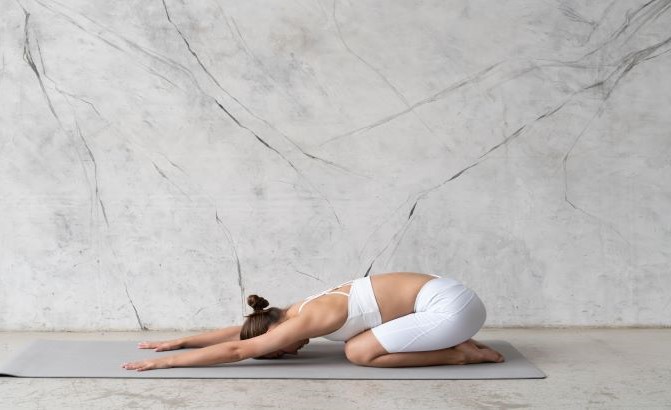
This can be an essential yoga asana to improve kidney health. It would help if you sat in Vajrasana on your thighs with your upper body straight and relaxed. This asana improves blood circulation to the head and nourishes the eyes and brain functions. It also helps to relieve fatigue and stress while increasing concentration.
Yoga Level: Intermediate
How to Do Shashankasana (Hare Pose)?
Step 1: Sit on your heels with your back and head straight and your hands resting on your thighs.
Step 2: Spread your knees apart while keeping your big toes touching.
Step 3: Inhale and lift your arms straight above your head, keeping them shoulder-width apart.
Step 4: Exhale and bend forward from your hips, keeping your arms, head, and body straight.
Step 5: Inhale again and lift your arms and head back up in line with your body.
Step 6: Exhale and bring your hands back down to your knees.
Step 7: Repeat this movement three to five times, then relax.
What are the Safety Precautions to Take While Performing Shashankasana?
- Begin the pose gradually, especially if you're new to it or have any existing neck or spine issues. Ease into the stretch gently and listen to your body's signals.
- Be cautious with your neck positioning. Avoid excessive pressure on the neck by keeping your head and neck aligned with your spine.
- Activate your core muscles to support your lower back and stabilise your spine during the forward bend.
Who Should Avoid Practising Shashankasana (Hare Pose)?
- Those with osteoarthritis in their knees should refrain from performing Vajrasana in this position.
- Those who have extremely high blood pressure should not perform Shashankasana.
- Shashankasana should not be done if you have a sliding disc.
9. Pawanmuktasana (Wind-Relieving Pose)
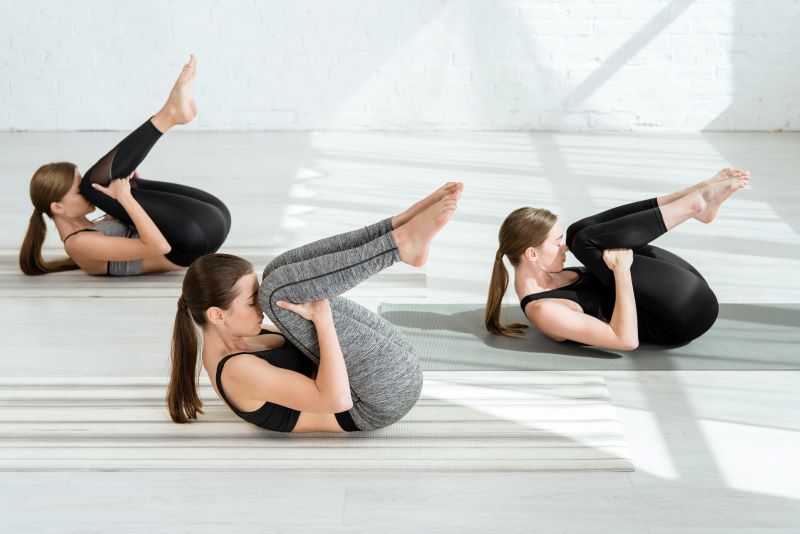
This asana can be a suitable form of yoga for kidney function improvement. This asana can reduce fats from the kidneys and other abdominal areas.
Yoga Level: Intermediate
How to Do Pawanmuktasana (Wind-Relieving Pose)?
Step 1: Assume a prone position and extend your legs to a 90-degree angle.
Step 2: Bring your thighs into your abdomen while bending both knees.
Step 3: Maintain the joints of your ankles and knees.
Step 4: Encircle your legs with your arms.
Step 5: Hold your elbows or clench your hands together.
Step 6: Raise your head and place your chin on your knees or chest.
What are the Safety Precautions to Take While Performing Pawanmuktasana?
- Always start with a gentle warm-up to prepare your body for the pose. This can include some light stretching or gentle yoga movements.
- It's best to practice Pawanmuktasana on an empty stomach. Wait 2-3 hours after a meal before practising this asana.
- Pay attention to your breath while performing the pose. Breathe deeply and steadily throughout the practice, and avoid holding your breath.
Who Should Avoid Practising Pawanmuktasana (Wind-Relieving Pose)?
- Knee, ankle, or shoulder injuries should be avoided when performing Pawanmuktasana (Wind Release Pose).
- Avoid this stance if you have weak knees, wrists, or ankles.
- Pregnant women and senior adults should avoid this pose since it puts undue strain on the abdomen.
10. Uttanpadasana (Raised Leg Pose)
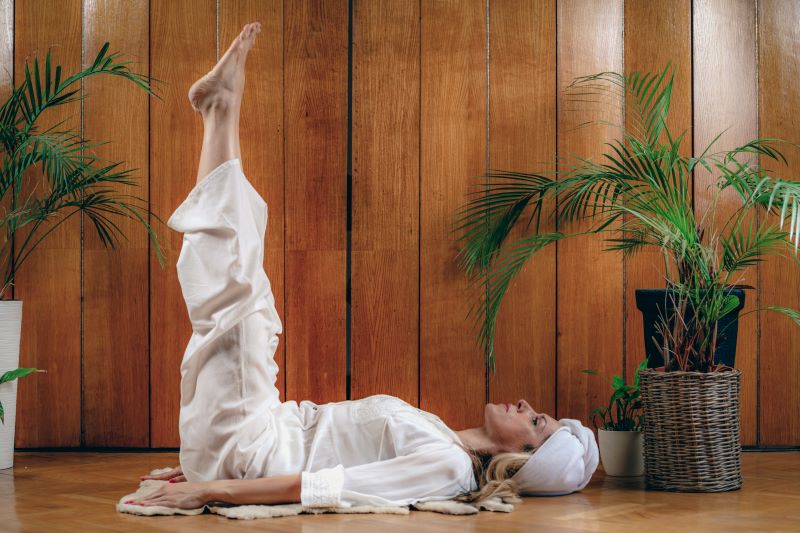
Raised leg stance, or Uttanpadasana, is a yoga practice that strengthens the pelvic area, back, hips, and abdominal muscles, which helps relieve kidney stones. Additionally, it can enhance pancreatic, renal, and liver function.
Yoga Level: Intermediate
How to Do Uttanpadasana (Raised Leg Pose)?
Step 1: Lie down on a mat, keeping your feet and knees close together.
Step 2: Pay attention to your breathing as you relax.
Step 3: Put your hands by your sides with your palms facing down.
Step 4: Take a deep breath and slowly lift your legs until they're at a 45-degree angle from the ground.
Step 5: Hold this position for 5 to 10 seconds, feeling the pressure in your lower abdomen and legs.
Step 6: Breathe out gently and lower your legs back to the ground.
Step 7: Relax your body completely, lying in a comfortable position, like you're taking a peaceful nap.
What are the Safety Precautions to Take While Performing Uttanpadasana?
- Always start with a gentle warm-up to prepare your body for the pose. This can include light stretching or yoga movements to loosen up your muscles.
- If you have any existing medical conditions or injuries, it's wise to consult with a healthcare professional or a qualified yoga instructor before attempting Uttanpadasana.
- Practice Uttanpadasana on an empty stomach or at least a few hours after eating. Performing it with a full stomach can lead to discomfort or indigestion.
Who Should Avoid Practising Uttanpadasana (Raised Leg Pose)?
- Uttanpadasana yoga should not be practised by anyone with severe hypertension or insulin-dependent diabetes patients as it may exacerbate their conditions.
- A raised leg position is not recommended for people with recent abdominal surgery or hip replacements because it puts a lot of pressure on the abdomen. Consequently, medical advice is crucial.
- People with arthritis should not practice Uttanpadasana since it may exacerbate joint pain.
11. Ardha Bhekasana (Half Frog Pose)
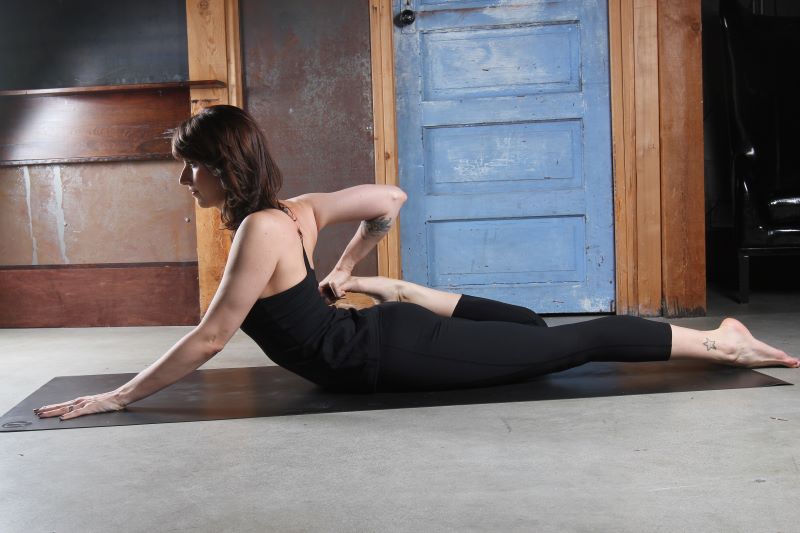
The half-frog posture, or Ardha Bhekasana in Sanskrit, opens the thighs, shoulders, and chest while strengthening the back. Additionally, the position can massage internal organs such as the bowels, spleen, and kidneys, improving general health.
Yoga Level: Beginner
How to Do Ardha Bhekasana (Half Frog Pose)?
Step 1: Lie on your stomach and prop yourself up on your forearms, with your elbows under your shoulders, like a Sphinx.
Step 2: Press your pelvis down and pull your belly button in towards your spine.
Step 3: Cross your left forearm in front of your body. Bend your right knee and reach back with your right hand to hold your foot, pulling it towards your right hip.
Step 4: Relax the top of your right thigh.
Step 5: If you can reach, place the heel of your hand on the top of your foot, with your fingers pointing forward and your elbow pointing up.
Step 6: Keep your upper body facing forward, with your chest open and your front arm engaged.
Step 7: Hold this position for five breaths before gently releasing your foot. Then, switch sides and repeat the steps.
What are the Safety Precautions to Take While Performing Ardha Bhekasana?
- Begin with a gentle warm-up to prepare your body for the pose. This can include light stretching or yoga movements to loosen up your muscles, especially in the hips and thighs.
- If you have any existing medical conditions or injuries, it's advisable to consult with a healthcare professional or a qualified yoga instructor before attempting Ardha Bhekasana.
- To practice the pose, use a supportive surface, like a yoga mat. This provides cushioning for your knees and support for your body during the pose.
Who Should Avoid Practising Ardha Bhekasana (Half Frog Pose)?
- Individuals who have recently suffered an injury, particularly to the knees, hips, or lower back, should avoid Ardha Bhekasana
- Those with chronic knee or hip issues, such as arthritis or bursitis, should cautiously approach Ardha Bhekasana.
- Pregnant individuals, particularly in the second and third trimesters, should avoid deep backbends
12. Balasana (Child Pose)
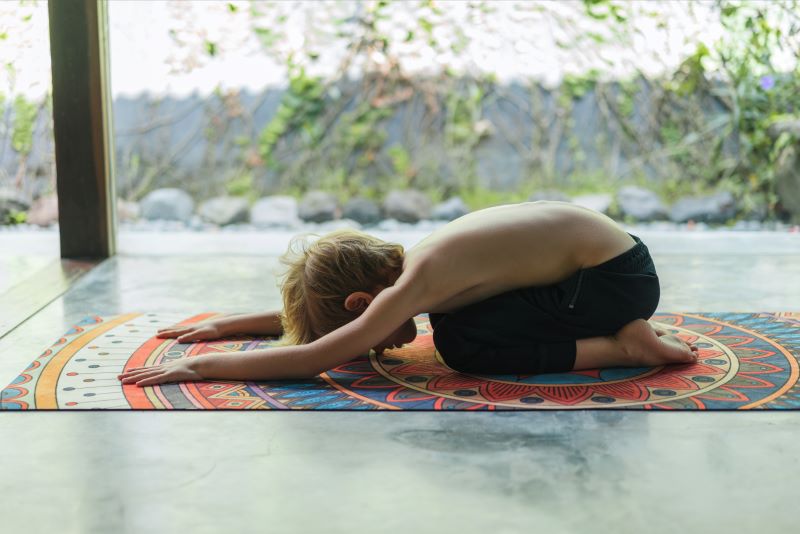
Balasana, or a child's pose, offers several benefits for kidney health. This yoga posture improves circulation to the abdominal region, supporting kidney function by ensuring a steady flow of blood and nutrients. It also aids in detoxification by gently compressing the abdomen, stimulating the kidneys, and eliminating waste products.
Yoga Level: Beginner
How to Do Balasana (Child Pose)?
Step 1: Kneel on the floor. Sit back on your heels, with your big toes touching and your knees separated about hip-width apart. (Keep your knees closer together for more front-body massage.)
Step 2: Breathe and bend forward, laying your torso between your thighs. Draw your hips towards your navel, resting them on your inner thighs. Widen the back of your pelvis and lengthen your tailbone. Tuck your chin slightly to lift the base of your skull from your neck.
Step 3: Stretch your hands on the mat for the extended child's pose. Or, reach back towards your feet with your arms alongside your torso, palms up, and let your shoulders relax towards the floor. Allow the weight of your shoulders to spread your shoulder blades across your back.
Step 4: The child’s pose is a resting position. Stay in this pose for 30 seconds to a few minutes.
Step 5: To come up, first lengthen your front torso. Then, inhale and lift your upper body by pressing your tailbone into your pelvis.
What are the Safety Precautions to Take While Performing Balasana?
- If you experience discomfort in your ankles, place a rolled-up towel or blanket under them for support.
- Those with breathing difficulties, such as asthma or nasal congestion, should avoid pressing the face down into the mat.
- Ensure you are comfortable and fully supported in the pose. Use props to support your torso, hips, and head to avoid strain or discomfort.
Who Should Avoid Practising Balasana (Child Pose)?
- Pregnant individuals, especially in the later stages, should avoid compressing the abdomen. Keep the knees wider apart to create space for the belly and reduce pressure.
- People with lower back pain or injuries approach Balasana with caution.
- People with high blood pressure avoid resting their head below their heart for extended periods. Keep your head supported and elevated with a cushion or block.
13. Kapalbhati Pranayam (Skull Shining Breath)
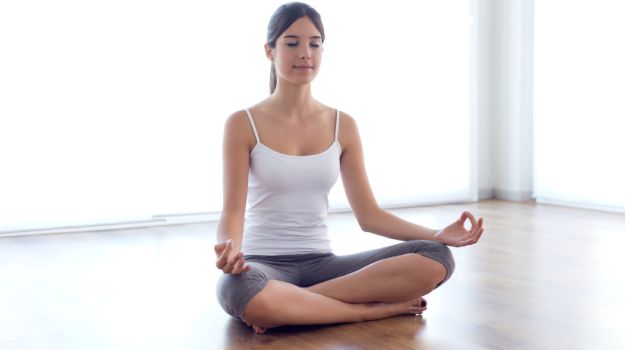
A yoga breathing technique called Kapalbhati Pranayama may help alleviate renal problems and enhance kidney function. It's a Hatha Yoga breathing technique that requires 120 breathing strokes per minute.
Yoga Level: Beginner
How to Do Kapalbhati Pranayam (Skull Shining Breath)?
Step 1: Sit comfortably with your back straight.
Step 2: Relax your body and focus on your normal breathing.
Step 3: Breathe in through both nostrils.
Step 4: Tighten your abdomen and forcefully exhale through your nose.
Step 5: Quickly release the tension so your belly pulls air back into your lungs.
Step 6: Repeat this 8 to 10 times, with each exhale-inhale cycle taking about one or two seconds.
Step 7: Speed up to about two cycles per second as you get more comfortable.
Step 8: Aim for about 20-30 repetitions per minute.
What are the Safety Precautions to Take While Performing Kapalbhati Pranayam?
- To avoid discomfort, practice Kapalbhati on an empty stomach or at least 2-3 hours after a meal.
- Sit comfortably with a straight spine, either in a cross-legged position or on a chair with your feet flat on the floor. Ensure your back is straight to allow for proper breathing.
- Do not forcefully contract your abdomen or breathe too forcefully.
Who Should Avoid Practising Kapalbhati Pranayam (Skull Shining Breath)?
- Due to the intense abdominal squeezes involved, women should not perform the skull shining breathing technique while pregnant, shortly after giving birth, or during their menstrual cycle.
- Individuals with cardiac issues or hypertension should only do this breathing method under the supervision of a yoga specialist.
Top Exercises to Improve Kidney Health
14. Walking
Doctors usually recommend this exercise for patients with kidney problems in general. Walking is an essential physical activity that keeps you healthy and your kidneys in a better position. Initially, you should start walking for a shorter period and extend it to about 30 minutes daily. It can curb cardiovascular conditions and improve blood circulation.
15. Jogging or Running
Healthcare professionals often consider jogging the best exercise for CKD patients. While walking is the primary form of exercise, jogging requires slightly more effort. Like the previous context, you need to start for a shorter period and increase it to at least 30 minutes daily or about 30 miles a week. Jogging helps boost stamina and stimulate the abdominal organs.
16. Gardening
While gardening is mainly seen as a hobby, doctors also consider it a useful exercise for kidney problems. Patients can focus on gardening, trimming the hedges, and mowing the yard. It helps them enhance their mental conditions, as they feel better contributing to the environment. On the other hand, it helps blood circulation and lowers blood pressure.
17. Climbing Stairs
Climbing stairs is essential for improving kidney health and a usual day-to-day activity for most people. When you do our apartment building or gym with artificial stairs, it can improve your kidney conditions. It would help if you considered climbing stairs thrice a week for about 10-15 minutes.
18. Biking
One should consider biking or cycling while considering different exercises and yoga asanas to improve kidney health. It is known that such activities are essential for blood circulation. You can try biking at least twice a week. You can use outdoor biking activities or bikes to cycle near your place.
19. Hiking
Finally, an effective exercise for CKD patients can be hiking. As established, regular walking can boost kidney patients' stamina and overall blood circulation. Hiking further alleviates the same by enhancing breathing capacities preventing shortness of breath among kidney patients. It also makes them more physically fit.
20. Swimming
Doxorubicin-induced chronic kidney disease (DRCKD) can be mitigated by swimming for 60 minutes. Swimming reduces collagen deposition, restores enlarged glomeruli, and inhibits myofibroblast transdifferentiation.
Another study discovered that 12 weeks of low-intensity aerobic exercise twice a week in a pool can benefit those with intermediate renal failure by raising glutathione levels and regulating blood pressure.
How Effective are Exercises and Yoga Poses for Kidney Patients?
Exercises and yoga poses can be highly effective for kidney patients. They help improve overall kidney function, reduce stress, and enhance physical well-being. Incorporating these practices into daily routines can support better health outcomes and quality of life for those with kidney issues.
- Improved Cardiovascular Health: Regular exercise, including yoga, enhances cardiovascular health, which is crucial for kidney patients. Improved heart health helps maintain better blood flow and reduces the risk of complications related to kidney disease.
- Blood Pressure Control: Exercise helps lower and manage blood pressure, which is vital since hypertension is both a cause and a consequence of kidney disease. Yoga poses, particularly those focusing on relaxation and stress reduction, can significantly aid in controlling blood pressure.
- Weight Management: Maintaining a healthy weight is essential for kidney patients to reduce the strain on their kidneys. Regular physical activity helps with weight management and can prevent obesity-related kidney issues.
- Improved Muscle Strength: Kidney disease can lead to muscle wasting and weakness. Strength-building exercises and certain yoga poses can help maintain and improve muscle mass and strength, enhancing overall physical function and quality of life.













